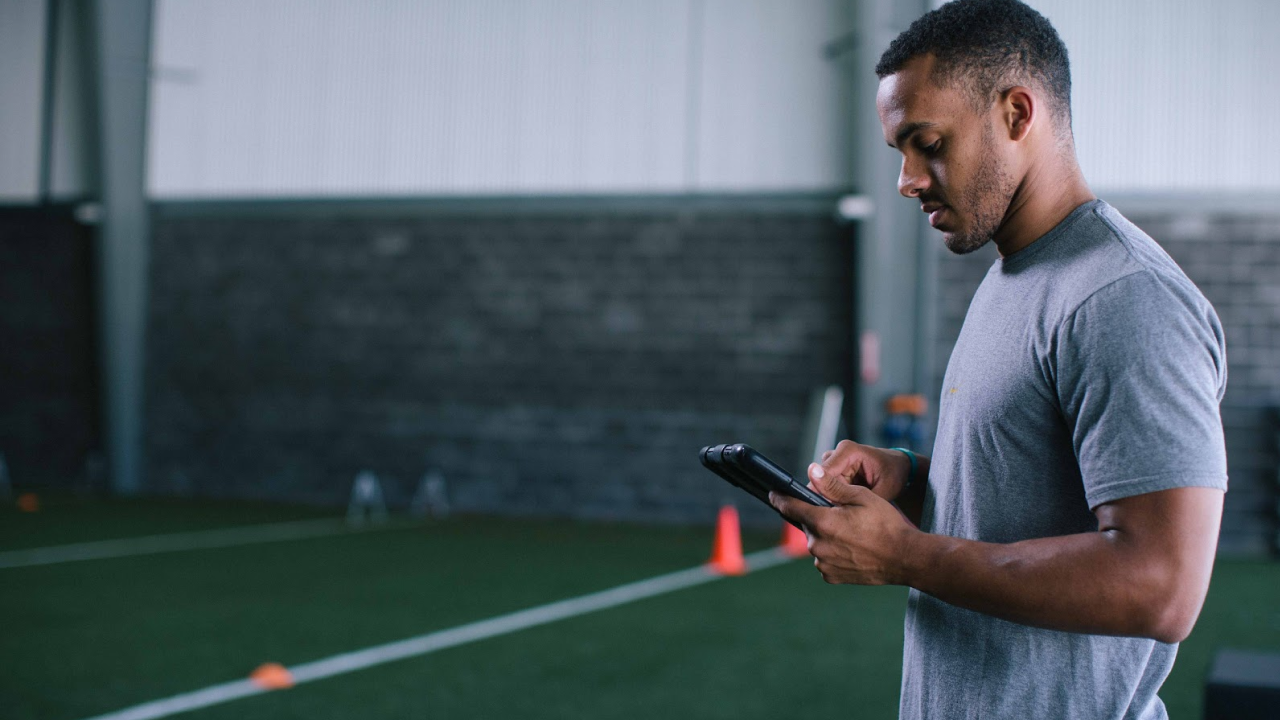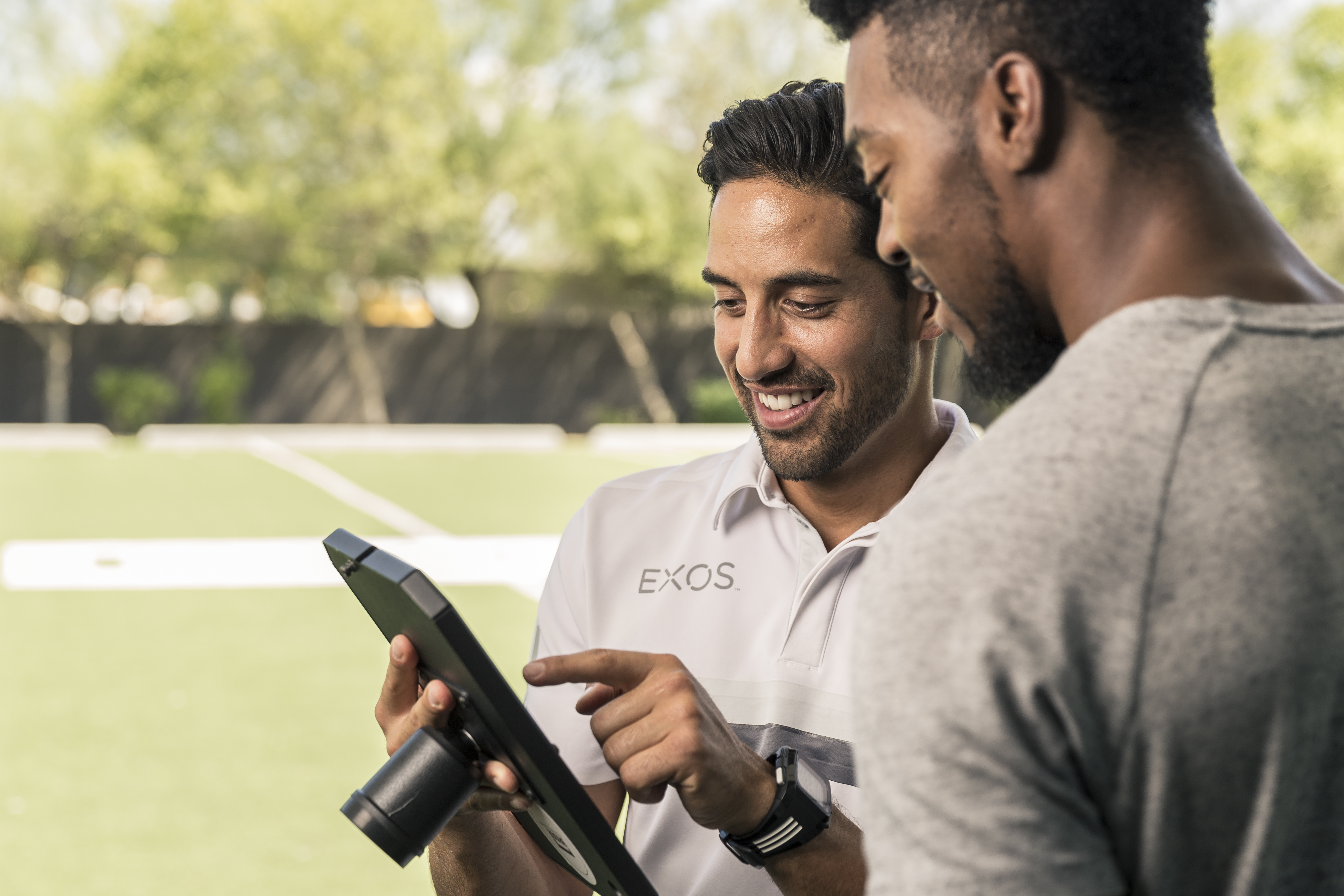Establishing Trust Through Communication | BridgeAthletic
Communication
We have all heard it before - first impressions matter. But rather than shrug it off as advice we've all heard, let's break down why we're always talking about it. As a personal trainer, interactions and connections can seriously impact your retention rate.
Why? Because your first impression sets the tone for your relationship.
The moment your client walks in to meet you, they're assessing you and your ability. Asking themselves, "is this who I want to spend such vulnerable time with?" And you need that answer to be yes, every time. It can all start with a good first impression. Consider these tips around body language and communication to ensure that first session is great.
First, establish a connection and relationship with your client before jumping into goals or training. While it may seem obvious, start with an introduction. When nerves are running high, people often skip over introducing themselves and telling the client a little about themselves. Just remember, they are probably nervous too.
Second, remember this first impression may be online. Set up a way to connect with your client from their first engagement with you. (Signing up is engagement #1)
Micheal Cazayoux, co-founder of Brute Strength, connects with his client right off the bat with a welcome email. The email includes next steps and covers any lingering questions. He never wants to leave a clients confused. This allows you to quickly establish value- gear #1 of a trusted relationship.
Third, Approach them on a human level, not strictly a business level. It is not just about retention, it is about giving your client the best possible help to reach their goals. And starting with getting to know them more personally can make your job easier and more enjoyable.
Here are a few steps you can take in that first meeting with a client to establish this vital connection.
1. Start simple. Welcome your clients as you would a friend. "Hi, how are you/how has your day been going." If you're lucky, maybe they will drop some great insight in your initial conversation that you can run with.
2. Actively listen and ask a follow up question. People have the tendency to half listen and start thinking about what they are going to say/do next. But by having a quick conversation where you follow up with what they are saying, you will connect with your client more quickly and make them feel valued.
3. Name drop. Add their name into your instructions or conversation. It will remind them you actually know who they are and make your conversation more personal. It's the little things.
4. Tell them about yourself - it can be as personal or professional oriented as you feel is best fit. But if you open up and share - they are more likely to feel comfortable and open up to you.
By starting with first creating a rapport and focusing on building a friendship, you can release some of the anxiety and self consciousness your client may be feeling.
It can also help in the following ways:
A. Increase chances of retention
If your client feels a connection with you, chances are higher that they will want to come back. You want your client to feel as if they are a part of a family, that their goals are your goals and you are a team working together to obtain them.
If they feel alone in the journey then they will find someone else who can stick with them through it. Make the environment they are in one where they feel comfortable and confident. Starting a new workout regime can be hard enough on its own, adding a social roadblock could deter your client even more.
B. Establish trust.
Trust is where it all starts.
"Without trust, especially for online training they will be skipping stuff, second guessing your advice or trying to do other things that they see on Instagram." -Micheal Cazayoux.
Let them in on the process so they know why you are having them do everything. Simply being confident in the work you're describing will make your client feel welcome in the process. Have a plan for your client and be available to answer their questions. Establishing trust needs to go in both directions. Your client needs to trust you and your process and you need to trust that your client is doing what's asked of them.
C. Motivate your client.
Understanding your client's needs and aspirations on a personal level provides you with insights on how to motivate them. Your message becomes about them and what they're working toward. Maybe your client mentions that he will soon be a grandfather and is excited to have young kids to run around with; a personal anecdote that will only come out if you take the time to get to know your client.
Without the rapport created to lead you to this key insight, all you may have gotten was that he wants your help losing 40 lbs. - helpful but surface level. Think less about the service you provide and more about developing a strong connection. It will make your session more impactful to you client and more fun for you.
Beyond client relationships, another strategy to employ is the Mirror Strategy.
It's when you mirror your clients body language, tone of voice, or humor so you better align with them.
People naturally trust and enjoy being around familiar habits. This shouldn’t be a strategy you take advantage of in a way that seems like mockery. However, by using similar language or energy as that of your client, you'll create a level of comfort and develop a familiar message.
You can also use the mirror strategy to figure out what level of language you should use with your client. Some clients will want the process explained to them. But if they use simplistic, low level language to communicate, chances are you should avoid high level jargon. You want them to find your approach accessible.
Key takeaway: Feel out your client and match their needs rather than thinking about how you do things. Each client is different so your relationship and your approach with each client should be different. If there's one thing we've learned, it's to never be the trainer on your phone during a session!
For more tips check out NASM's blog on strengthening communication skills.
About the Author

At Bridge, we are all athletes and coaches first. As athletes, our team has experienced everything from riding the pine on JV, to winning NCAA championships, to competing in the Olympic Games. As coaches, we have helped countless athletes reach their full potential, winning everything from age group section championships to Olympic Gold Medals.
Related Posts

Six Benefits of Exercise on Mental...
Exercise is not only vital for physical health but also plays a transformative role in mental...

4 Easy Steps to Launch and Sell a...
The holiday season offers a unique opportunity for personal trainers to reach more clients and...

4 Proven Offers to Attract Clients and...
Standing out in the competitive world of personal training and fitness coaching requires more than...

